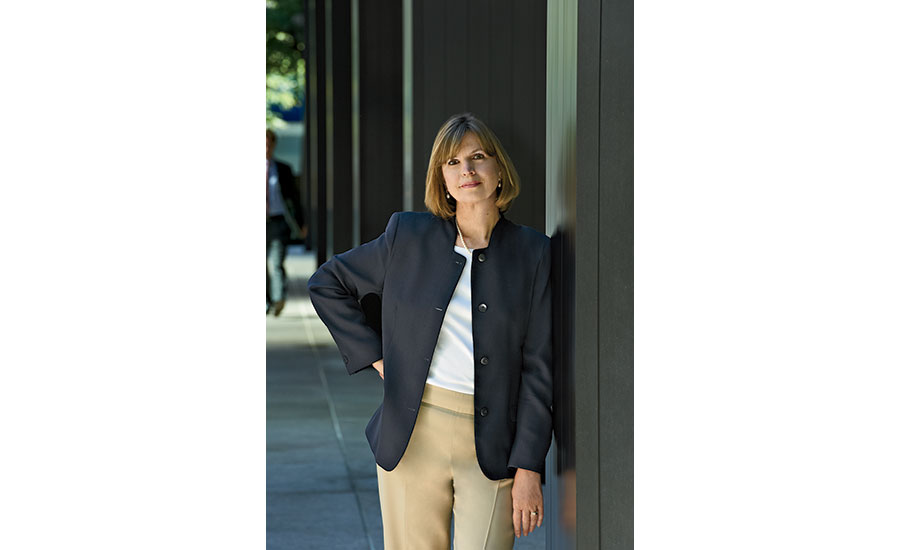“I love architecture because it’s the last great generalist profession,” said Gregg Pasquarelli, a founding principal of SHoP Architects, speaking at this year’s Monterey Design Conference in California. He’s right—being an architect today offers a broader platform than ever to affect the built environment by a variety of means.
A wide range of creative possibilities was on full display in back-to-back events hosted by Architectural Record in New York a month ago, with the latest installment of our day-long Innovation Conference and the magazine’s sixth annual Women in Architecture Forum and Awards.
Advancing computer technologies underpin this creative potential. Nader Tehrani, dean of architecture at Cooper Union (as well as founding principal of the firm NADAAA), opened the Innovation Conference by offering a glimpse of the future, highlighting academic programs where students and professors explore applications of computer-aided design far beyond the norm. (Trust me on this, one experiment involved making huge pieces of masonry seem to dance.) For certain firms in the vanguard, the push to inventively use technology is already here. KieranTimberlake partner Billie Faircloth, who leads the office’s transdisciplinary research (and who was honored as an Innovator in RECORD’s Women in Architecture Awards in 2017), described some of the multiple ways the firm integrates information and analysis into its design process.
For other architects who spoke at the Innovation Conference, the role of technology is eclipsed by deeper concerns about designing for communities within the local context. Michel Rojkind, whose eponymous firm is based in Mexico City (he is also senior vice president of architecture at WeWork), does not just design according to the given brief but pushes to expand public space; he persuaded one client to add a rooftop park to a supermarket in a neighborhood woefully lacking in green space.
A similar mission is central to the work of Dublin’s Grafton Architects (winner of this year’s Royal Gold Medal from RIBA). Cofounding principal Yvonne Farrell spoke of creating the experience of architecture, not just the architectural object, by ensuring that open space infiltrates the firm’s projects, which extend from Lima to London. “An architect should make as much nothing as possible,” she said, quoting Alejandro de la Sota about the voids that people actually move through and inhabit.
Berlin-based Francis Kéré, who has built primarily in his native Burkina Faso, and Marlon Blackwell of Fayetteville, Arkansas, might seem to have little in common, but each demonstrates remarkable ingenuity in reinventing the vernacular, elevating the essence of local culture and materials in their architecture. Blackwell—who likes to brag about how little his designs cost per square foot—says he works between the “ideal and the improvised” in such projects as the award-winning small Eastern Orthodox church, made of corrugated metal with a repurposed satellite dish for a dome.
For a global architect known for building everything from skyscrapers to airports, engaging the local might seem a surprising turn. But Norman Foster, in his closing keynote, toured the audience through the high points of his career and then homed in on the work of his foundation in the urban slums of India. The 84-year-old Pritzker Prize–winner described the efforts to begin to transform from within the informal settlements in Odisha, where millions of people live. There, Foster and his team have been working with inhabitants to create “vision maps,” helping to secure land rights and bringing in power and sanitation—all with respect for the existing web of social structures within these longstanding communities.
Another architectural leader whose work could potentially impact a vast number of people is Dana Cuff, founder of the urban think tank cityLAB at UCLA. Building on research, she coauthored the California legislation that now permits accessory dwelling units on single-family lots throughout the state, to ease the affordable-housing crisis. Cuff was honored as Activist in this year’s RECORD Women in Architecture Awards celebration, along with Toshiko Mori, Design Leader, and Sharon Johnston, the New Generation Leader. In addition, Claire Weisz was cited as Innovator for her expansive view of architectural practice, through her work addressing urban problems. And Mabel O. Wilson was honored as Educator for shining a light, through her scholarship and practice, on race and racism in the built environment.
What the work of all these professionals demonstrates is that architecture is an enterprise that revolves around powerful ideas as well as building—a field for innovators and thinkers and, increasingly, a home for the renaissance woman as well as the renaissance man.




Post a comment to this article
Report Abusive Comment